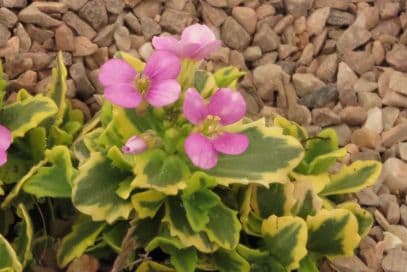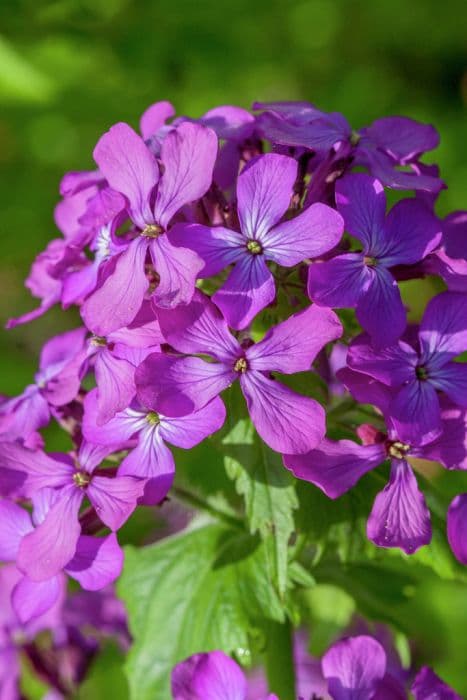Cuckooflower Cardamine pratensis

ABOUT
Cardamine pratensis, commonly known as cuckoo flower or ladies' smock, is a perennial plant that sports a rosette of oval-shaped, pinnate leaves at its base. The leaves are typically light to dark green. As the plant matures, it sends up one or more flowering stems that are adorned with small, delicate flowers. These flowers possess four pale lilac or pinkish petals, which sometimes may appear to have a hint of white, arranged in a cross shape, typical of its family. In the center of these petals, there's a cluster of stamens that hold the pollen. Below the petals, the green sepals cup the flower, providing contrast to the soft colors of the petals. After flowering, the plant produces slender seedpods that split open when mature to release the seeds. The overall appearance of cuckoo flower can be described as airy and light, with a graceful structure that is pleasing to the eye.
About this plant
 Names
NamesFamily
Brassicaceae.
Synonyms
Cuckooflower, Lady's Smock, Mayflower, Meadow Cress, Milkmaids.
Common names
Cardamine occulta, Cardamine kochii, Cardamine dentata, Cardamine heterophylla, Cardamine pratensis var. angustifolia, Dentaria pratensis.
 Toxicity
ToxicityTo humans
The plant Cardamine pratensis, commonly known as Cuckooflower, is not known to be toxic to humans. There are no well-documented cases of poisoning from the consumption of this plant. As with any plant material, individual allergies or sensitivities could occur but generally, Cuckooflower is not considered a toxic plant.
To pets
Cardamine pratensis, commonly referred to as Cuckooflower, is not reported to be toxic to pets such as dogs and cats. There is no significant information suggesting that the consumption of this plant by pets leads to poisoning. Pets may experience stomach upset if they consume large quantities of any non-food item, but specific toxicities of Cuckooflower to common pets are not documented.
 Characteristics
CharacteristicsLife cycle
Biennials
Foliage type
Deciduous
Color of leaves
Green
Flower color
Pink
Height
1-2 feet (30-60 cm)
Spread
0.5-1 feet (15-30 cm)
Plant type
Herb
Hardiness zones
4
Native area
Europe
Benefits
 General Benefits
General Benefits- Supports biodiversity: Cuckoo Flower provides a habitat and food source for a variety of insects such as butterflies and bees, which are essential pollinators in the ecosystem.
- Edible parts: The leaves and flowers are edible and can be used in salads, offering a spicy cress-like flavor.
- Ornamental value: With its delicate light pink flowers, the Cuckoo Flower can add aesthetic value to gardens and landscapes.
- Soil improvement: As part of the Brassicaceae family, it can help in maintaining soil quality and fertility through its growth cycle.
- Indicator species: Cuckoo Flower can signal the health of an ecosystem, as it thrives in damp, healthy meadows, indicating good environmental conditions.
- Culinary uses: The young leaves of the plant are sometimes used as a substitute for watercress in recipes.
 Medical Properties
Medical Properties- Diuretic: Cardamine pratensis has been traditionally used to promote the production of urine.
- Expectorant: The plant is said to help in clearing mucus from the respiratory tract.
- Antiscorbutic: It is known for its high Vitamin C content, which historically made it useful in preventing and treating scurvy.
- Antiseptic: The plant has been used for its potential to prevent infection and bacteria growth in wounds.
 Air-purifying Qualities
Air-purifying QualitiesThis plant is not specifically known for air purifying qualities.
 Other Uses
Other Uses- Cardamine pratensis, commonly known as Cuckooflower, can be used as a natural dye source, providing colors ranging from yellow to brown when used in traditional fabric dyeing processes.
- The leaves of Cuckooflower are edible raw and can be added to salads for a peppery kick, similar to the use of arugula or watercress.
- In the past, this plant's seed pods have been pickled as a caper substitute, providing a similar sharp and tangy flavor to dishes.
- The Cuckooflower can play an important role in butterfly gardens as it serves as a larval food plant for the Orange-tip butterfly (Anthocharis cardamines).
- This plant can be used in educational settings as a tool for teaching about early spring wildflowers and plant biology in temperate regions.
- The flowers of Cuckooflower can be crystallized and used to decorate desserts, adding a distinctive floral aesthetic and mild flavor.
- The Cuckooflower may serve as a natural fertilizer, as it returns nutrients to the soil through its decaying plant matter, benefiting the surrounding soil ecology.
- As a component of "green manure," Cuckooflower can be grown and then plowed back into the soil to improve soil structure and organic content without the use of chemical fertilizers.
- In landscaping and garden design, the Cuckooflower can be utilized for its ornamental value, especially when creating wildflower meadows or naturalistic planting schemes.
- Due to its early flowering period, the Cuckooflower can be a useful plant for providing nectar to early-emerging pollinators such as bees and hoverflies in the springtime.
Interesting Facts
 Feng Shui
Feng ShuiCuckooflower is not used in Feng Shui practice.
 Zodiac Sign Compitability
Zodiac Sign CompitabilityCuckooflower is not used in astrology practice.
 Plant Symbolism
Plant Symbolism- Innocence: Cuckooflower, also known as Cardamine pratensis, is often associated with innocence due to its delicate and unassuming flowers that bloom in the early spring.
- Purity: The white and pale pink hues of the cuckooflower petals are traditionally linked to purity and virtue, making it a symbol of cleanliness and moral integrity.
- Youthfulness: Since cuckooflower is one of the first plants to bloom at the end of winter, it symbolizes youth and renewal.
- Beauty: The dainty appearance of the cuckooflower is a representation of natural beauty that is appreciated for its simplicity and elegance.
- Patience: The cuckooflower takes time to establish and grow, often blooming in meadows that have not been disturbed for a long time, thus symbolizing patience and the virtue of waiting for the right moment.
 Water
WaterCuckooflower, also known as Cardamine pratensis, thrives best when the soil is kept consistently moist but not waterlogged. The ideal method for watering this plant is to use a gentle shower or pour water at the base until the soil feels moist at a depth of about an inch. During the growing season in spring and early summer, you might need to water cuckooflower about once or twice a week, depending on weather conditions; this could mean approximately 1 gallon per week for an established plant. Reduce watering frequency once the plant goes dormant post-flowering.
 Light
LightCuckooflower prefers dappled sunlight or partial shade, so the best spot to place it would be in an area where it can receive some morning sun but is protected from the harsh afternoon rays. The plant is adaptable, however, and can also flourish under the bright, indirect light found under open tree canopies or at the edge of garden beds that receive some shade throughout the day.
 Temperature
TemperatureCuckooflower is tolerant of a wide range of temperatures, but it grows best in conditions that mimic its native temperate habitats. Ideally, keep the cuckooflower in an environment where the temperature remains between 50°F and 70°F. It can survive temperatures down to around 20°F and can handle up to about 80°F, but growth may be affected at the extremes of this range.
 Pruning
PruningCuckooflower does not typically require regular pruning, however, removing spent flowers can promote a tidier appearance and prevent unwanted self-seeding. Prune the plant after flowering, cutting back the flower stems to ground level. This maintenance can be done annually, during late spring or early summer, once the plant has finished blooming.
 Cleaning
CleaningNot needed
 Soil
SoilCuckooflower (Cardamine pratensis) thrives best in moist, well-drained soils that are rich in organic matter. A mix of loamy soil with added compost or leaf mold can provide the necessary nutrients and structure. The soil pH for Cuckooflower should ideally be neutral to slightly alkaline, ranging from 6.5 to 7.5.
 Repotting
RepottingCuckooflower (Cardamine pratensis) does not generally require frequent repotting. It can typically be left undisturbed for several years, as it prefers a stable environment with minimal root disturbance. Repotting every 3 to 5 years or when the plant has outgrown its current container is sufficient.
 Humidity & Misting
Humidity & MistingCuckooflower (Cardamine pratensis) prefers a humid environment, thriving on moisture in the air. The ideal humidity level for this plant is around 60 to 75%. In drier conditions, ensuring that it is grown near natural water sources or in a moist meadow can help maintain the right humidity.
 Suitable locations
Suitable locationsIndoor
Place Cuckooflower in bright, indirect light and keep soil moist.
Outdoor
Plant Cuckooflower in a damp spot with partial shade.
Hardiness zone
4-9 USDA
 Life cycle
Life cycleCommonly known as Cuckoo Flower or Lady's Smock, Cardamine pratensis begins its life as a seed, which germinates in moist soil typically during spring. Upon germination, the seed develops into a small rosette of leaves close to the ground, making the most of the low light conditions. During its first year, it focuses on vegetative growth, building a strong root system and storing energy in preparation for flowering. Flowering occurs during spring of the following year, where it produces pink or white flowers that attract pollinators for sexual reproduction. After pollination, the flowers develop into long, thin seed pods called siliques, which eventually dry and split open to release the seeds. The plant completes its life cycle by dying back after seed dispersal, with the seeds lying dormant until the next favorable growing season.
 Propogation
PropogationPropogation time
Spring
Propogation: The common name for Cardamine pratensis is Cuckooflower or Lady's Smock. This plant is typically propagated through seed sowing. The best time to propagate Cuckooflower by seeds is in the autumn, although it can also be done in the spring. For autumn sowing, seeds should be scattered directly onto the surface of well-drained soil and lightly pressed in, but not covered, as they need light to germinate. If sowing in the spring, seeds may require stratification: a period of cold treatment to break dormancy. This can be achieved by placing the seeds in a moistened growing medium in a plastic bag, then refrigerating for several weeks (usually 4 to 6 weeks). After stratification, sow the seeds as you would in the autumn, but it's vital to ensure that frost risk has passed. Seedlings should emerge within a few weeks and can be thinned or transplanted with care once they have established a couple of sets of true leaves.









